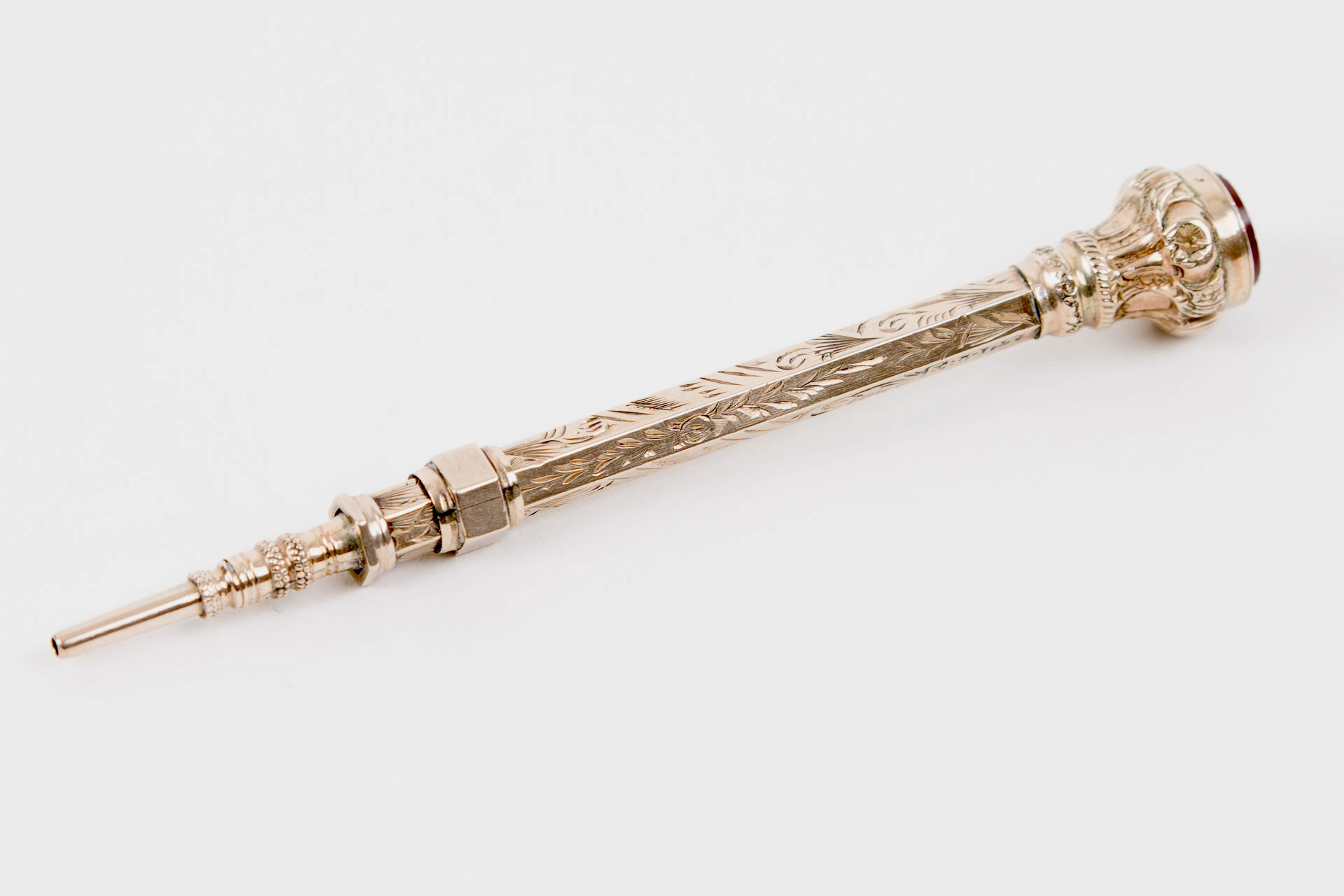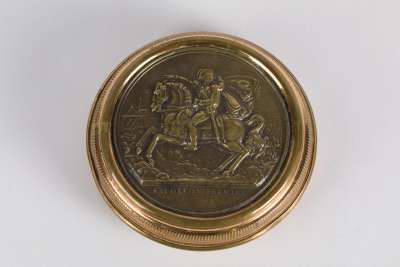This 9ct gold propelling pencil, crafted by Edward Beer in London around 1890, is a fine example of late Victorian design. The pencil features a distinctive hexagonal sliding mechanism, which allows for the extension and retraction of the lead through clockwise and counter-clockwise movements. The base of the pencil is adorned with a bloodstone, set within a decorative mount that exhibits intricate metalwork, possibly depicting scrolls or acanthus leaves. Such motifs are frequently associated with the Victorian era, showcasing the period's penchant for detailed and ornamental designs.
Condition Report
The condition of this propelling pencil is very good, with minimal signs of age and wear. The gold retains its original lustre, and the sliding mechanism functions smoothly, reflecting the quality craftsmanship of the period. The bloodstone remains securely set within its mount, showing no chips or cracks. Minor surface scratches are present, consistent with careful use over time, but do not detract from the item's overall appearance. This piece has been well-preserved, offering a glimpse into the meticulous standards of Victorian craftsmanship.
Dimensions
Weight: .005gm, Length: 6cm, 7cm propelled, Width: 0.05cm.
A Writing Instrument of Distinction
The original purpose of this gold propelling pencil was to serve as a portable and elegant writing instrument, favoured by individuals who valued both functionality and style. During the late 19th century, such pencils were not only practical tools for writing but also symbols of social status and taste. The inclusion of a bloodstone, known for its deep green colour speckled with red, added a touch of sophistication, making it a desirable accessory for the discerning owner.
Victorian Design Elements
This propelling pencil exemplifies Victorian design's embrace of intricate detailing and decorative flourishes. The use of acanthus leaf motifs and scrollwork in its metalwork is characteristic of Victorian aesthetics, which often drew inspiration from nature. The hexagonal shape of the pencil adds a geometric precision that complements the ornate detailing. Such elements reflect the Victorian era's fascination with combining beauty and function, resulting in objects that were both utilitarian and artistically engaging.
Craftsmanship in Gold and Gemstone Setting
The making of this propelling pencil involved skilled craftsmanship in goldsmithing and gemstone setting. Working with 9ct gold required precision to achieve the desired form and finish, particularly in creating the detailed mount for the bloodstone. The sliding mechanism, a hallmark of propelling pencils, was engineered to provide smooth operation, reflecting the advanced metalworking techniques of the time. The secure setting of the bloodstone further highlights the jeweller's expertise, ensuring durability and aesthetic appeal.
Created by Edward Beer
Edward Beer, the maker of this propelling pencil, was a noted craftsman based in London during the late 19th century. His work is recognised for its attention to detail and quality, hallmarks of the period's best artisans. Operating in a city that was a hub of innovation and style, Beer contributed to the rich tapestry of Victorian craftsmanship. His pieces, such as this pencil, are valued for their historical significance and the insight they provide into the era's artisanal practices.
Collecting Victorian Writing Instruments
Collectors of Victorian writing instruments are often drawn to these objects for their blend of historical significance and intricate design. This propelling pencil is a prime example of what attracts collectors: a combination of functional innovation and decorative artistry. Such pieces reflect the technological advancements of the era, as well as the social and cultural values that prized beauty in everyday objects. The inclusion of precious materials like gold and bloodstone further adds to their desirability, making them cherished items in any collection of Victorian artefacts.













